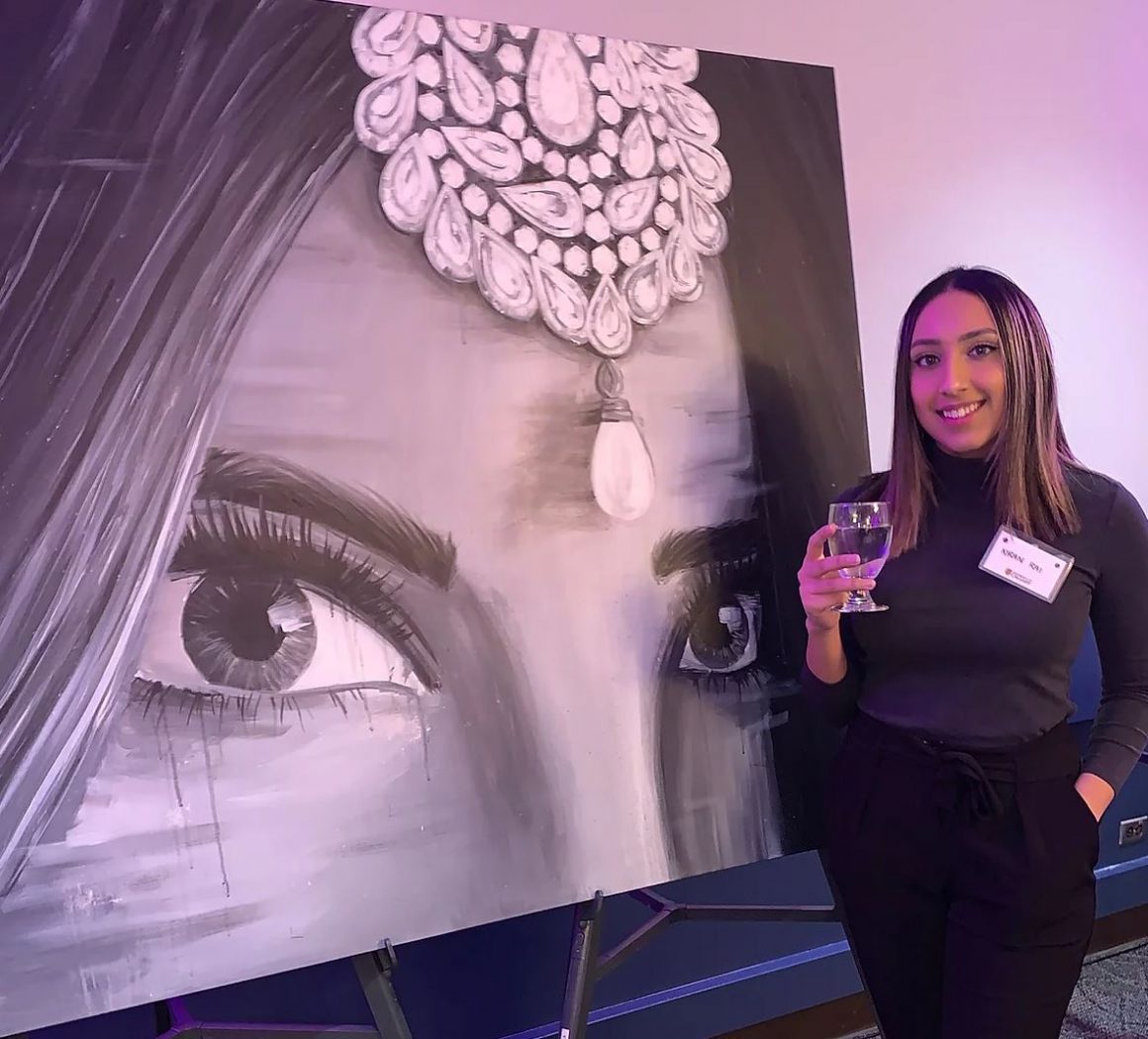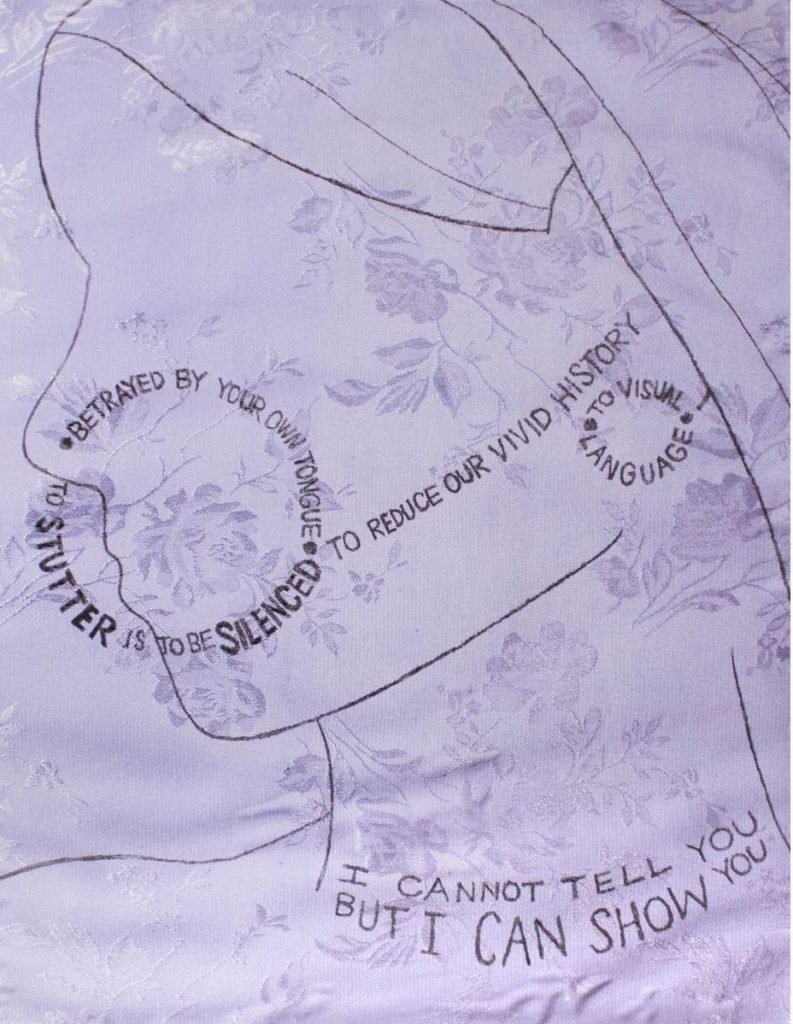
Spill the Chai: On painting your own narrative
By Aymen Sherwani, May 30 2020 —
What do a raw chicken on the floor of a contemporary art gallery and the Mona Lisa have in common?
The answer: whether we like it or not is that they are both considered works of art that are deeply reflective of the heavy introspection of an artist and the experiences that have guided them through that creative process. When it comes to art, there is no question as to how monumental it has been since the beginning of time, whether it be for communicating opinions, making a statement, or even rewriting the narrative of history itself. The reality is, art is not just a medium through which artists can express themselves and create pretty, or not pretty, pictures for viewers to comment on. Art is, in fact, a legacy — a door opened for conversations that many people had not even thought about, alongside the conversations that others were dying to have.
This is especially true in a society where we often tiptoe around the issues that people of colour face, where a lack of understanding is often attributed to a lack of representation within arts and culture. Before anyone says anything about how “well-represented” most minority cultures already are in art and history museums — there’s a difference between displaying stolen colonial exploits from cultures across the world, and actually allowing for respected artists of colour to showcase their work alongside their white counterparts. The distinction lies in respect, and it is through artists of colour that the colonial narrative of cultures across the world is repainted to reflect a more human experience, rather than that of fetishism and exoticism often perpetuated upon us due to a lack of understanding.
Kiran Rai is a local artist, who’s cultural identity as a first-generation woman in the Punjabi diaspora serves as inspiration for her work, in not only her job as an architect but also as a multi-media creator, in an effort to both “capture and exude emotion in the built environment in order to influence the human experience.” Rai continues to fight the good fight, and pave the way for other artists of colour and their stories to be accepted into the art scene in North America — her work has been featured in the UCalgary PUSH Emerging Artists Exhibitions, alongside galleries across the city.
Rai says that “art has always been my personal outlet of expression, probably from the first time I picked up a pencil. I used to doodle tiny lines on the walls of my house and drive my mum crazy. In third grade, I wanted to be an artist when I grew up. I battled with the reality of that as I got older, but here I am, more or less where I was destined to be.”

Rai, who previously worked in Tokyo and is now based in Calgary, is aiming to bring her Punjabi heritage and Canadian identity together to change the narrative around what arts and culture should look like across the country. It is artists like her that are positively changing the art scene to reflect a more empowered and in-depth narrative on decolonizing one’s mind.
“My experiences as a first-generation Punjabi-Canadian woman have really shaped the lens through which I view the world”, Rai said in an interview with the Gauntlet. “I am thankful for the opportunity to be sharing a voice of minority because a considerable amount of my art is based on universalized experiences of cultural identity. The diaspora is a difficult thing to navigate, and I focus on freedom from expressive limitations.”
Looking at her pieces gave me goosebumps all over my arms, and left me wondering how the simplest pieces could be the most powerful. For instance, her “I Am The Diaspora” series is a collection of cloth work that features poems like “betrayed by your own language; to stutter is to be silenced; to reduce our vivid history to visual language; I cannot tell you but I can show you” and transforms the words into traditional South Asian jewelry to reflect the linguistic limitations the South Asian diaspora may feel growing up away from the home their parents knew. It’s artwork like this that truly authenticates not only the issues that immigrants experience but also leaves a legacy for future artists of colour to look up to, as an evolution of their political identities here in Canada.
A large portion of Rai’s work showcases the beauty of Punjabi culture, often displaying the duality of her traditional Punjabi heritage sprinkled with urban elements. In a way, it screams “see us for who we are, rather than how you want to see us,” and I think that’s beautiful. When asked about whether she believes her art is political, Rai agrees wholeheartedly.
“Even my existence as a woman and a person of colour is political. The subject matter of my art is derivative of my personal experiences, especially focused on the reclamation of power in minority identities. I’m personally very interested in topics surrounding intersectional feminism, world politics, and the decolonization of western perspectives.”
True to her word, one of her largest pieces as seen above, “Blood Diamonds”, was showcased at the 2020 International Development Week, and seeks to shed light upon the impact of western beauty standards onto people of colour.
“It was a process of self-discovery with myself as the muse. This was a way of capturing the conflicting dual identity in which I locate myself. The piece aims to communicate resurgence and resiliency on bittersweet terms. The name originates from the ‘blood diamond’ trade, also known as ‘conflict diamonds’ through which I identify a sort of reclaiming and redefining of cultural identity through decolonization of the western framework of beauty standards.”
Like any professional, the feeling of imposter syndrome is really frequent, especially in the beginning when it seems like you can’t get anything started. For all the emerging artists of colour, who find it intimidating entering spaces where their ideas themselves seem to be minorities: it really does get better over time and dedication.
“I have battled with that personally through my career as an emerging artist, but I definitely wanted to get my art out there,” said Rai. “I started to look for more opportunities and even sometimes create them myself. What that looks like is sourcing and submitting to artist calls, group shows, or curating my own shows. Being true to your work and yourself is important, and you never know who is going to identify themselves with your art. Personally, I would definitely recommend others to build an identity for themselves on social media, as that’s been a huge influence in broadening my audience.”
You can find all the amazing work Rai has done as a multi-media artist on Instagram @krai.art and online at krai.ca, ranging from murals and abstract water art to the architectural work she participated in during her time in Tokyo.
